
IN THE EARLY MORNING HOURS on June 24, 2021, a section of Champlain Towers South, a 12-story apartment complex in Surfside, Florida, crumpled to the ground.Eyewitness accounts and video footage revealed the progression of the condo's collapse. Around 1:15 a.m., a loud crash came from the parking garage beneath the L-shaped structure, as the garage's ceiling, which extended outward to become the building's pool deck, began to disintegrate. Minutes later, Champlain Towers South's eastern wing gave way in two stages with its midsection falling first, followed by the rest of the wing, seconds later. Dust and debris engulfed the building's west wing, still standing amid a pile of rubble.
Ninety-eight people died in the collapse, and hundreds more lost their homes and possessions. It was one of the deadliest structural building failures in U.S. history, and the emergency response to it was the largest ever in Florida, other than for hurricanes. Before rescue workers even finished identifying the victims, multiple teams of investigators began to dig into the aftermath to determine what led to the building's collapse.
Matthew Fadden, a structural engineer based 20 minutes north of Surfside, learned of the incident later that day. Seeing photos of the wreckage, he noted that the building suffered a "progressive collapse," where an initial structural failure leads to more failures, spreading through the building like cascading dominoes. By September, the court-appointed receiver and insurers for the condo association would hire Fadden's firm, Wiss, Janney, Elstner Associates, Inc., to do its own investigation. Given the scale of destruction, and the fact that Champlain Towers South had been built using common methods, the possibility remained that the deficiency responsible for the building's collapse may also exist at other structures. Investigators felt an urgency to find answers.
Esta historia es de la edición March - April 2024 de Popular Mechanics US.
Comience su prueba gratuita de Magzter GOLD de 7 días para acceder a miles de historias premium seleccionadas y a más de 9,000 revistas y periódicos.
Ya eres suscriptor ? Conectar
Esta historia es de la edición March - April 2024 de Popular Mechanics US.
Comience su prueba gratuita de Magzter GOLD de 7 días para acceder a miles de historias premium seleccionadas y a más de 9,000 revistas y periódicos.
Ya eres suscriptor? Conectar
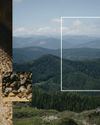
ONE OF THE 'GREATEST THREATS' TO THE PACIFIC NORTHWEST ISN'T WHAT YOU THINK.
EXPERTS ARE PREPARING THE REGION AGAINST THE THREAT OF DANGEROUS VOLCANIC MUDFLOWS, KNOWN AS LAHARS, WHICH COULD INUNDATE THE COMMUNITIES SURROUNDING MT. RAINIER IN AS LITTLE AS 30 MINUTES.
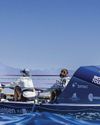
THE WORLD'S TOUGHEST ROW
They rowed 3,000 miles across the Atlantic, battling unpredictable weather, chaotic seas, and finicky equipment. But what they discovered gave them profound new insights into the power of the ocean.

HOW TO DIY OFF-GRID SOLAR
SPEND THE TIME UP FRONT AND PLAN IT CAREFULLY TO AVOID DISAPPOINTMENT
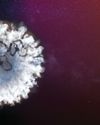
Are We on the Verge of an ARMS RACE in SPACE?
RUMORS OF A RUSSIAN SPACE NUKE, ALONG WITH OTHER SATELLITE-TARGETING WEAPONS, HAVE MADE GEOPOLITICAL TENSIONS EXTEND INTO ORBIT.

Fresh Fingerprints on an Ancient Statue
A CLAY FIGURINE HAS SPENT MILLENNIA incomplete, waiting at the bottom of a lake for its long-dead craftsman to finish the Iron Age-era statuette.

Quantum Entanglement in Our Brains
IT HAS LONG BEEN ARGUED THAT THE human brain is similar to a computer. But in reality, that's selling the brain pretty short.

The Tools of Copernicus
WAY BACK IN 1508, WITH ONLY LIMited tools at his disposal, Nicolaus Copernicus developed a celestial model of a heliocentric planetary system, which he described in hist landmark work De revolutionibus orbium coelestium. It was a complete overhaul of our conception of the universe-one that, unfortunately, earned him the ire of the Catholic church for decades after his death-and forever changed the way we look at the stars.

Building a Sixth-Generation Bomber Raptor
THE GLOBAL COMBAT AIR Programme (GCAP)-a project by the U.K., Italy, and Japan to develop a sixth-generation stealth fighter-has been busy at the drawing board reshaping its vision of the future of air warfare. And judging by the new concept model unveiled at this year's Farnborough air show, that future has big triangular wings.
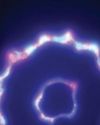
The Electroweak Force of the Early Universe
TODAY, THE UNIVERSE AS WE KNOW IT IS governed by four fundamental forces: the strong nuclear force, the weak nuclear force, electromagnetism, and gravity.
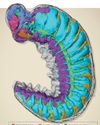
This Ancient Fossil With a Brain and Guts
WE KNOW WHAT FOSSILS LOOK like. For example, typical dinosaur fossils are bones turned to stone and preserved from the passage of time, located, if we're particularly lucky, in large collections that can be reassembled to represent the beast they used to prop up in their entirety.